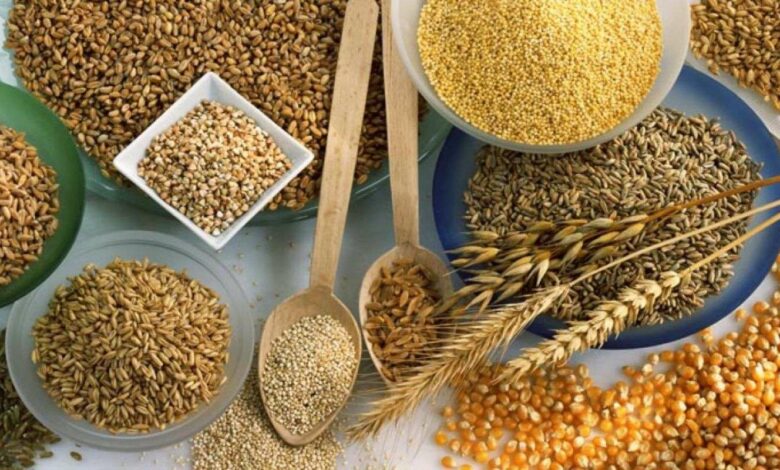FAO forecasts a decline in grain production in 2022

The Food and Agriculture Organization of the United Nations (FAO) price index disclosed a 1.9 per cent decline in cereal production, while the organization’s new projections indicate a decline in global cereal production in 2022. Food and Agriculture Organization of the United Nations “, according to a recent new report by the Food and Agriculture Organization of the United Nations.
The FAO’s tightly controlled food price index averaged 138.0 points in August, down 1.9 per cent from July but still 7.9 per cent higher than a year ago. This index follows monthly changes in international prices for a basket of the most traded food commodities.
The report noted that the FAO grain price index fell by 1.4 per cent from the previous month, stating that the decline was driven by a 5.1 per cent drop in international wheat prices, reflecting an improvement in production expectations in North America and the Russian Federation, as well as the resumption of exports from Black Sea ports in Ukraine. Rice prices remained steady on average during the month, while coarse grain prices rose by a marginal 0.2 per cent, with the rise in global corn prices caused by the hot and dry weather surrounding their cultivation in the European Union and the United States of America offset by lower barley and sorghum prices.
The FAO Vegetable Oil Price Index fell 3.3 per cent from July, slightly below its August 2021 level.
Global soy oil prices rose moderately due to concern about the impact of unfavourable weather conditions on production in the United States.
However, this increase was offset by low prices for palm oil, sunflower oil and rapeseed oil, which reflected the increased availability of palm oil from Indonesia due to lower export taxes and the gradual resumption of the shipment of sunflower oil from Ukraine’s ports.
The FAO dairy price index fell 2.0 per cent in August, although it remained 23.5 per cent higher than its July 2021 value. World cheese prices rose for the tenth consecutive month, while milk prices fell amid expectations of increased supplies from New Zealand, despite declining production in Western Europe and the United States of America.
The FAO meat price index fell 1.5 per cent from July but remained 8.2 per cent higher than its year-ago value. International prices for poultry meat fell in August amid an increase in the quantity available for global export, while global prices for beef declined due to weak domestic demand in some major exporting countries. Pork prices have risen.
The FAO sugar price index fell 2.1 per cent to its lowest level since July 2021, mainly as a result of increased exports from India and lower ethanol prices in Brazil.
The Food and Agriculture Organization of the United Nations (FAO) has also released its updated cereal production forecast for 2022, which anticipates a significant decline. Global grain production is expected to fall by 38.9 million tons, 1.4 per cent from the previous year, according to the new version of FAO’s Summary of Grain Supply and Demand.
The bulk of the decline forecast relates to coarse grains, where the European Union’s corn crops are expected to fall by 16 per cent from their five-year average owing to exceptional levels of heat and drought. The Food and Agriculture Organization of the United Nations (FAO), in contrast, raised its forecast for global wheat production from its last July report to 777 million tonnes, a negligible decrease compared to 2021, against the backdrop of the Russian Federation’s projected record crops and favourable weather conditions in North America. Global rice production is expected to fall by 2.1 per cent from its highest peak in 2021.
The report identified global grain use for the 2022/2023 period as 792 2 million tons, while global grain stocks are expected to shrink by 2023 per cent to 2.1 million tons at the end of the 845 season. As a result, the proportion of the world ‘ This is still considered relatively high by the organization compared to historically recorded figures.
The world’s grain trade is expected to fall by 1.9 per cent in the 2022/2023 period (July June) from last year’s to 469.6 million tons.





